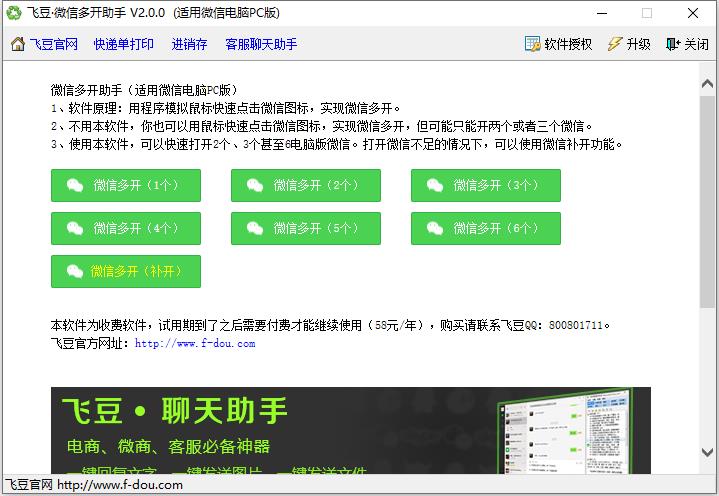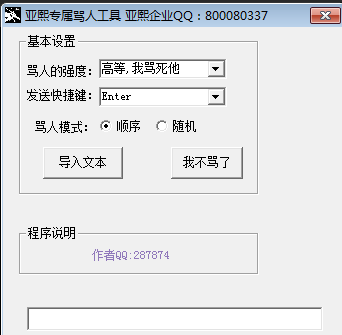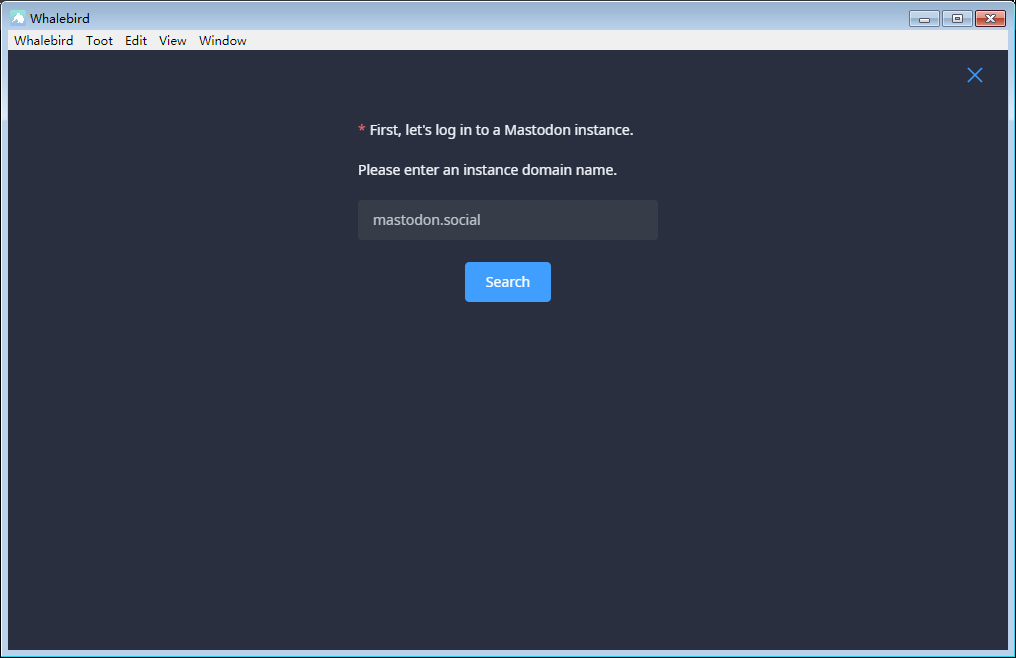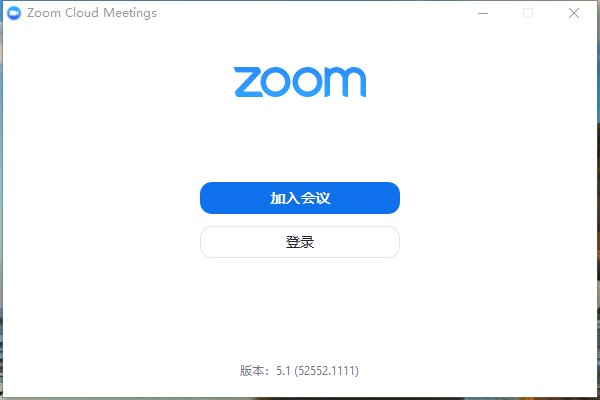详细聊聊redis中的分布式锁
时间:2023-04-07 16:32
我们都知道分布式环境下要使用分布式锁才行。那么分布式锁都需要有哪些特点呢?单机redis怎么加锁?redis集群加锁有哪些坑呢?别急,下面我们一步步解开Redis分布式锁的面纱。 不论在任何情况下都只能有一个线程持有锁。 redis集群环境不能因为某一个节点宕机而出现获取锁或释放锁失败。【相关推荐:Redis视频教程】 必须有超时控制机制或者撤销操作。 自己加锁,自己释放。不能释放别人加的锁。 同一线程可以多次加锁。 一般情况下都是使用setnx+lua脚本实现。 直接贴代码 进行单元测试,模拟一百个线程同时进行秒杀 只有三个线程抢到了锁 总的来说有两个: 那么这两个问题有没有办法解决呢?有,接下来我们就来讲讲Redisson Redisson是一个在Redis的基础上实现的Java驻内存数据网格(In-Memory Data Grid)。它不仅提供了一系列的分布式的Java常用对象,还提供了许多分布式服务。其中包括( 集成很简单,只需两步 使用也很简单,只需要注入RedissonClient即可 可能不了解redisson的小伙伴会不禁发出疑问。 我们来一步步跟着lock()方法看下源码(本地redisson版本为3.20.0) 查看lock(-1, null, false);方法 我们看下它是怎么上锁的,也就是tryAcquire方法 上面代码里面包含加锁和锁续约的逻辑,我们先来看看加锁的代码 这里就看的很明白了吧,redisson使用了lua脚本来保证了命令的原子性。 Redis Hexists 命令用于查看哈希表的指定字段是否存在。 当key不存在,或者已经含有给定字段(也就是已经加过锁了,这里是为了实现重入性),直接对字段的值+1 这里就明白了,字段名称是 uuid + : + threadId 接下来我们看看锁续约的代码scheduleExpirationRenewal(threadId); 我们看看renewExpiration()方法 OK,分析到这里我们已经知道了,lock(),方法会默认加30秒过期时间,并且开启一个新线程,每隔10秒检查一下,锁是否释放,如果没释放,就将锁过期时间设置为30秒,如果锁已经释放,那么就将这个新线程也关掉。 我们写个测试类看看 查看锁的过期时间,及是否续约 我们再改改代码,看看是否可重入和字段名称是否和我们预期一致 我们加锁了三次,重入次数是3,字段值也是 uuid+:+threadId,和我们预期结果是一致的。 redisson是基于Redlock算法实现的,那么什么是Redlock算法呢? 假设当前集群有5个节点,那么运行redlock算法的客户端会一次执行下面步骤 这里有下面几个点需要注意: 更多编程相关知识,请访问:编程视频!! 以上就是详细聊聊redis中的分布式锁的详细内容,更多请关注Gxl网其它相关文章!
分布式锁的特点
redis单机怎么实现
package com.fandf.test.redis;import cn.hutool.core.util.IdUtil;import cn.hutool.core.util.RandomUtil;import lombok.extern.slf4j.Slf4j;import org.springframework.data.redis.core.RedisTemplate;import org.springframework.data.redis.core.script.DefaultRedisScript;import org.springframework.stereotype.Service;import javax.annotation.Resource;import java.util.Collections;import java.util.concurrent.TimeUnit;/** * redis 单机锁 * * @author fandongfeng * @date 2023/3/29 06:52 */@Slf4j@Servicepublic class RedisLock { @Resource RedisTemplate<String, Object> redisTemplate; private static final String SELL_LOCK = "kill:"; /** * 模拟秒杀 * * @return 是否成功 */ public String kill() { String productId = "123"; String key = SELL_LOCK + productId; //锁value,解锁时 用来判断当前锁是否是自己加的 String value = IdUtil.fastSimpleUUID(); //加锁 十秒钟过期 防死锁 Boolean flag = redisTemplate.opsForValue().setIfAbsent(key, value, 10, TimeUnit.SECONDS); if (!flag) { return "加锁失败"; } try { String productKey = "good123"; //获取商品库存 Integer stock = (Integer) redisTemplate.opsForValue().get(productKey); if (stock == null) { //模拟录入数据, 实际应该加载时从数据库读取 redisTemplate.opsForValue().set(productKey, 100); stock = 100; } if (stock <= 0) { return "卖完了,下次早点来吧"; } //扣减库存, 模拟随机卖出数量 int randomInt = RandomUtil.randomInt(1, 10); redisTemplate.opsForValue().decrement(productKey, randomInt); // 修改db,可以丢到队列里慢慢处理 return "成功卖出" + randomInt + "个,库存剩余" + redisTemplate.opsForValue().get(productKey) + "个"; } finally {// //这种方法会存在删除别人加的锁的可能// redisTemplate.delete(key);// if(value.equals(redisTemplate.opsForValue().get(key))){// //因为if条件的判断和 delete不是原子性的,// //if条件判断成功后,恰好锁到期自己解锁// //此时别的线程如果持有锁了,就会把别人的锁删除掉// redisTemplate.delete(key);// } //使用lua脚本保证判断和删除的原子性 String luaScript = "if (redis.call('get',KEYS[1]) == ARGV[1]) then " + "return redis.call('del',KEYS[1]) " + "else " + "return 0 " + "end"; redisTemplate.execute(new DefaultRedisScript<>(luaScript, Boolean.class), Collections.singletonList(key), value); } }}package com.fandf.test.redis;import org.junit.jupiter.api.DisplayName;import org.junit.jupiter.api.RepeatedTest;import org.junit.jupiter.api.Test;import org.junit.jupiter.api.parallel.Execution;import org.springframework.boot.test.context.SpringBootTest;import javax.annotation.Resource;import static org.junit.jupiter.api.parallel.ExecutionMode.CONCURRENT;/** * @Description: * @author: fandongfeng * @date: 2023-3-24 16:45 */@SpringBootTestclass SignServiceTest { @Resource RedisLock redisLock; @RepeatedTest(100) @Execution(CONCURRENT) public void redisLock() { String result = redisLock.kill(); if("加锁失败".equals(result)) { }else { System.out.println(result); } }}成功卖出5个,库存剩余95个成功卖出8个,库存剩余87个成功卖出7个,库存剩余80个
redis锁有什么问题?
Redisson实现分布式锁
Redisson是什么?
BitSet, Set, Multimap, SortedSet, Map, List, Queue, BlockingQueue, Deque, BlockingDeque, Semaphore, Lock, AtomicLong, CountDownLatch, Publish / Subscribe, Bloom filter, Remote service, Spring cache, Executor service, Live Object service, Scheduler service) Redisson提供了使用Redis的最简单和最便捷的方法。Redisson的宗旨是促进使用者对Redis的关注分离(Separation of Concern),从而让使用者能够将精力更集中地放在处理业务逻辑上。springboot集成Redisson
<dependency> <groupId>org.redisson</groupId> <artifactId>redisson-spring-boot-starter</artifactId></dependency>
spring: application: name: test redis: host: 127.0.0.1 port: 6379
package com.fandf.test.redis;import lombok.extern.slf4j.Slf4j;import org.redisson.api.RLock;import org.redisson.api.RedissonClient;import org.springframework.stereotype.Component;import javax.annotation.Resource;/** * @author fandongfeng */@Component@Slf4jpublic class RedissonTest { @Resource RedissonClient redissonClient; public void test() { RLock rLock = redissonClient.getLock("anyKey"); //rLock.lock(10, TimeUnit.SECONDS); rLock.lock(); try { // do something } catch (Exception e) { log.error("业务异常", e); } finally { rLock.unlock(); } } }
what?加锁时不需要加过期时间吗?这样会不会导致死锁啊。解锁不需要判断是不是自己持有吗?
哈哈,别着急,我们接下来一步步揭开redisson的面纱。Redisson lock()源码跟踪
//RedissonLock.class@Overridepublic void lock() { try { lock(-1, null, false); } catch (InterruptedException e) { throw new IllegalStateException(); }}private void lock(long leaseTime, TimeUnit unit, boolean interruptibly) throws InterruptedException { //获取当前线程id long threadId = Thread.currentThread().getId(); //加锁代码块, 返回锁的失效时间 Long ttl = tryAcquire(-1, leaseTime, unit, threadId); // lock acquired if (ttl == null) { return; } CompletableFuture<RedissonLockEntry> future = subscribe(threadId); pubSub.timeout(future); RedissonLockEntry entry; if (interruptibly) { entry = commandExecutor.getInterrupted(future); } else { entry = commandExecutor.get(future); } try { while (true) { ttl = tryAcquire(-1, leaseTime, unit, threadId); // lock acquired if (ttl == null) { break; } // waiting for message if (ttl >= 0) { try { entry.getLatch().tryAcquire(ttl, TimeUnit.MILLISECONDS); } catch (InterruptedException e) { if (interruptibly) { throw e; } entry.getLatch().tryAcquire(ttl, TimeUnit.MILLISECONDS); } } else { if (interruptibly) { entry.getLatch().acquire(); } else { entry.getLatch().acquireUninterruptibly(); } } } } finally { unsubscribe(entry, threadId); }// get(lockAsync(leaseTime, unit)); }private Long tryAcquire(long waitTime, long leaseTime, TimeUnit unit, long threadId) { //真假加锁方法 tryAcquireAsync return get(tryAcquireAsync(waitTime, leaseTime, unit, threadId));}public RedissonLock(CommandAsyncExecutor commandExecutor, String name) { super(commandExecutor, name); this.commandExecutor = commandExecutor; this.internalLockLeaseTime = commandExecutor.getServiceManager().getCfg().getLockWatchdogTimeout(); this.pubSub = commandExecutor.getConnectionManager().getSubscribeService().getLockPubSub();}private <T> RFuture<Long> tryAcquireAsync(long waitTime, long leaseTime, TimeUnit unit, long threadId) { RFuture<Long> ttlRemainingFuture; if (leaseTime > 0) { ttlRemainingFuture = tryLockInnerAsync(waitTime, leaseTime, unit, threadId, RedisCommands.EVAL_LONG); } else { //waitTime和leaseTime都是-1,所以走这里 //过期时间internalLockLeaseTime初始化的时候赋值commandExecutor.getServiceManager().getCfg().getLockWatchdogTimeout(); //跟进去源码发现默认值是30秒, private long lockWatchdogTimeout = 30 * 1000; ttlRemainingFuture = tryLockInnerAsync(waitTime, internalLockLeaseTime, TimeUnit.MILLISECONDS, threadId, RedisCommands.EVAL_LONG); } CompletionStage<Long> s = handleNoSync(threadId, ttlRemainingFuture); ttlRemainingFuture = new CompletableFutureWrapper<>(s); //加锁成功,开启子线程进行续约 CompletionStage<Long> f = ttlRemainingFuture.thenApply(ttlRemaining -> { // lock acquired if (ttlRemaining == null) { if (leaseTime > 0) { //如果指定了过期时间,则不续约 internalLockLeaseTime = unit.toMillis(leaseTime); } else { //没指定过期时间,或者小于0,在这里实现锁自动续约 scheduleExpirationRenewal(threadId); } } return ttlRemaining; }); return new CompletableFutureWrapper<>(f);}<T> RFuture<T> tryLockInnerAsync(long waitTime, long leaseTime, TimeUnit unit, long threadId, RedisStrictCommand<T> command) { return evalWriteAsync(getRawName(), LongCodec.INSTANCE, command, "if ((redis.call('exists', KEYS[1]) == 0) " + "or (redis.call('hexists', KEYS[1], ARGV[2]) == 1)) then " + "redis.call('hincrby', KEYS[1], ARGV[2], 1); " + "redis.call('pexpire', KEYS[1], ARGV[1]); " + "return nil; " + "end; " + "return redis.call('pttl', KEYS[1]);", Collections.singletonList(getRawName()), unit.toMillis(leaseTime), getLockName(threadId));}
redis.call('hexists', KEYS[1], ARGV[2]) 查看 key value 是否存在。
如果哈希表含有给定字段,返回 1 。 如果哈希表不含有给定字段,或 key 不存在,返回 0 。127.0.0.1:6379> hexists 123 uuid(integer) 0127.0.0.1:6379> hincrby 123 uuid 1(integer) 1127.0.0.1:6379> hincrby 123 uuid 1(integer) 2127.0.0.1:6379> hincrby 123 uuid 1(integer) 3127.0.0.1:6379> hexists 123 uuid(integer) 1127.0.0.1:6379> hgetall 1231) "uuid"2) "3"127.0.0.1:6379>
这个字段的值,也就是ARGV[2], 取得是getLockName(threadId)方法,我们再看看这个字段的值是什么 protected String getLockName(long threadId) { return id + ":" + threadId; } public RedissonBaseLock(CommandAsyncExecutor commandExecutor, String name) { super(commandExecutor, name); this.commandExecutor = commandExecutor; this.id = commandExecutor.getServiceManager().getId(); this.internalLockLeaseTime = commandExecutor.getServiceManager().getCfg().getLockWatchdogTimeout(); this.entryName = id + ":" + name; } //commandExecutor.getServiceManager() 的id默认值 private final String id = UUID.randomUUID().toString();protected void scheduleExpirationRenewal(long threadId) { ExpirationEntry entry = new ExpirationEntry(); //判断该实例是否加过锁 ExpirationEntry oldEntry = EXPIRATION_RENEWAL_MAP.putIfAbsent(getEntryName(), entry); if (oldEntry != null) { //重入次数+1 oldEntry.addThreadId(threadId); } else { //第一次加锁 entry.addThreadId(threadId); try { //锁续约核心代码 renewExpiration(); } finally { if (Thread.currentThread().isInterrupted()) { //如果线程异常终止,则关闭锁续约线程 cancelExpirationRenewal(threadId); } } }}private void renewExpiration() { ExpirationEntry ee = EXPIRATION_RENEWAL_MAP.get(getEntryName()); if (ee == null) { return; } //新建一个线程执行 Timeout task = commandExecutor.getServiceManager().newTimeout(new TimerTask() { @Override public void run(Timeout timeout) throws Exception { ExpirationEntry ent = EXPIRATION_RENEWAL_MAP.get(getEntryName()); if (ent == null) { return; } Long threadId = ent.getFirstThreadId(); if (threadId == null) { return; } //设置锁过期时间为30秒 CompletionStage<Boolean> future = renewExpirationAsync(threadId); future.whenComplete((res, e) -> { if (e != null) { log.error("Can't update lock {} expiration", getRawName(), e); EXPIRATION_RENEWAL_MAP.remove(getEntryName()); return; } //检查锁是还否存在 if (res) { // reschedule itself 10后调用自己 renewExpiration(); } else { //关闭续约 cancelExpirationRenewal(null); } }); } }, internalLockLeaseTime / 3, TimeUnit.MILLISECONDS); //注意上行代码internalLockLeaseTime / 3, //internalLockLeaseTime默认30s,那么也就是10s检查一次 ee.setTimeout(task);}//设置锁过期时间为internalLockLeaseTime 也就是30s lua脚本保证原子性protected CompletionStage<Boolean> renewExpirationAsync(long threadId) { return evalWriteAsync(getRawName(), LongCodec.INSTANCE, RedisCommands.EVAL_BOOLEAN, "if (redis.call('hexists', KEYS[1], ARGV[2]) == 1) then " + "redis.call('pexpire', KEYS[1], ARGV[1]); " + "return 1; " + "end; " + "return 0;", Collections.singletonList(getRawName()), internalLockLeaseTime, getLockName(threadId));}package com.fandf.test.redis;import org.junit.jupiter.api.Test;import org.redisson.api.RLock;import org.redisson.api.RedissonClient;import org.springframework.boot.test.context.SpringBootTest;import javax.annotation.Resource;/** * @Description: * @author: fandongfeng * @date: 2023-3-2416:45 */@SpringBootTestclass RedissonTest { @Resource private RedissonClient redisson; @Test public void watchDog() throws InterruptedException { RLock lock = redisson.getLock("123"); lock.lock(); Thread.sleep(1000000); }}127.0.0.1:6379> keys *1) "123"127.0.0.1:6379> ttl 123(integer) 30127.0.0.1:6379> ttl 123(integer) 26127.0.0.1:6379> ttl 123(integer) 24127.0.0.1:6379> ttl 123(integer) 22127.0.0.1:6379> ttl 123(integer) 21127.0.0.1:6379> ttl 123(integer) 20127.0.0.1:6379> ttl 123(integer) 30127.0.0.1:6379> ttl 123(integer) 28127.0.0.1:6379>
package com.fandf.test.redis;import org.junit.jupiter.api.Test;import org.redisson.api.RLock;import org.redisson.api.RedissonClient;import org.springframework.boot.test.context.SpringBootTest;import javax.annotation.Resource;/** * @Description: * @author: fandongfeng * @date: 2023-3-24 16:45 */@SpringBootTestclass RedissonTest { @Resource private RedissonClient redisson; @Test public void watchDog() throws InterruptedException { RLock lock = redisson.getLock("123"); lock.lock(); lock.lock(); lock.lock(); //加了三次锁,此时重入次数为3 Thread.sleep(3000); //解锁一次,此时重入次数变为3 lock.unlock(); Thread.sleep(1000000); }}127.0.0.1:6379> keys *1) "123"127.0.0.1:6379>127.0.0.1:6379> ttl 123(integer) 24127.0.0.1:6379> hgetall 1231) "df7f4c71-b57b-455f-acee-936ad8475e01:12"2) "3"127.0.0.1:6379>127.0.0.1:6379> hgetall 1231) "df7f4c71-b57b-455f-acee-936ad8475e01:12"2) "2"127.0.0.1:6379>
Redlock算法
当redis请求获取锁时,客户端会设置一个网络连接和响应超时时间,避免因为网络故障等原因导致阻塞。
只有当半数以上redis节点加锁成功,并且加锁消耗的时间要小于锁失效时间,才算锁获取成功
防止因为服务端响应消息丢失,但是实际数据又添加成功导致数据不一致问题



























